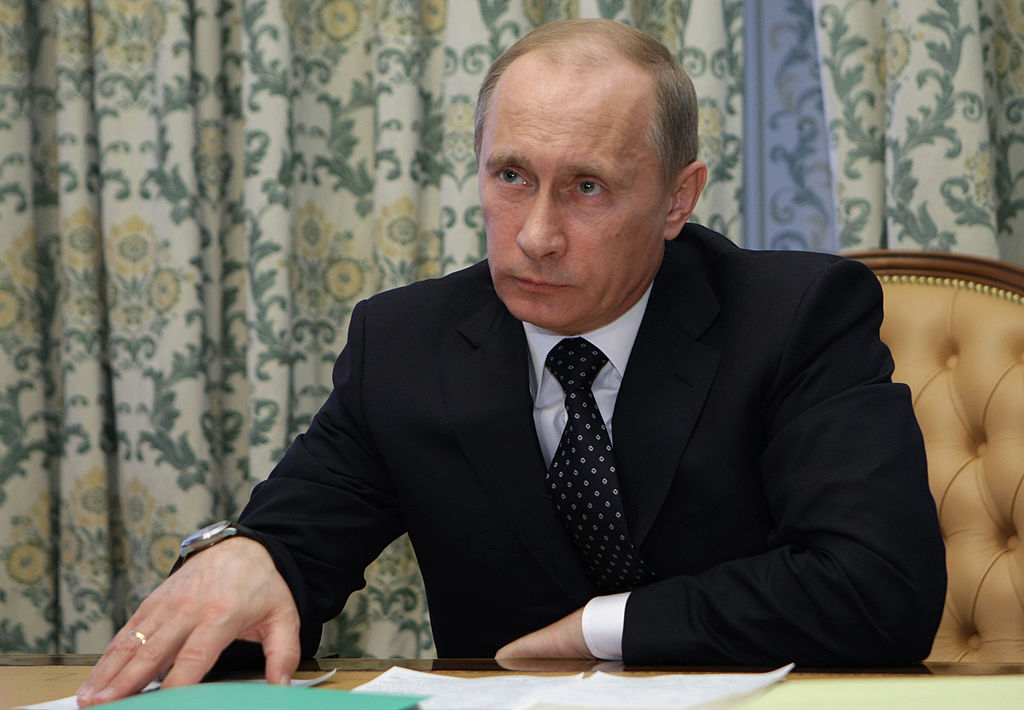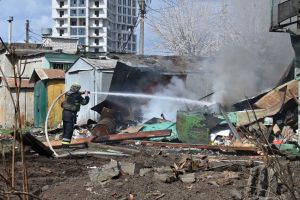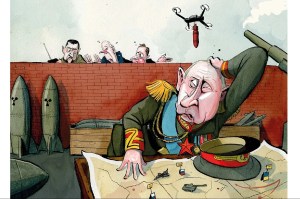With the stunning, rapid advance of its military against the Russians, Ukraine has shot back into the headlines. The focus is, understandably, on the battlefield, but the happenings behind the lines deserve attention too. Since the first weeks of the war, information has trickled in about Russia’s massive, criminal attempts to relocate Ukrainian civilians.
While much of the situation in the Russian-occupied regions of Ukraine remains murky, what is known provides a rough outline. Russia’s attempt at social control in Ukraine consists of two key elements: filtration and forced relocation. Filtration is the process by which Russia (and its puppet states, the Donetsk and Luhansk People’s Republics) document the identity and history of a given individual, through invasive and coercive means.
According to a report from Human Rights Watch (HRW), Ukrainian civilians typically end up in the filtration process either through force or by necessity. Civilians are forced to undergo filtration when stopped at checkpoints, upon arrival when transported via Russian-supplied buses, or when seized by Russian troops while sheltering from the fighting. They have also been documented choosing to undergo filtration out of necessity, as those who pass are given a slip that apparently allows for easier travel in the occupied regions.
The second element, forced relocation, occurs in several forms. A report by Yale’s School of Public Health indicates that there are at least 21 filtration and detention centers in eastern Ukraine, mostly in the Donbas region. These are meant to sift through the population and funnel out those who Russia wants detained. Those who fail the filtration process are often relocated to shadowy detention centers or simply disappear altogether. In April, a little over a month into the war, a Ukrainian official stated that around 1,700 civilians and soldiers were held in these detention centers. One can only guess how many are held today, over six months after the start of hostilities. The US believes it is in the thousands.
The HRW report also indicates that Ukrainian civilians trying to flee combat areas via Russian-supplied buses — as occurred during the siege of Mariupol — were often only offered transport into Russian-occupied territory or Russia itself. In many cases, civilians were either forced to take the transport, told there was no other option, or manipulated into thinking they were going to Ukrainian territory.
In July, Secretary of State Antony Blinken stated that between 900,000 and 1.6 million people, including 260,000 children, have been deported to Russia against their will. Many are brought to locations around Russia, and while most are not held there permanently, it is very difficult for those without resources or documentation to exit the country.
Modern Russia’s history is replete with this kind of social manipulation and control.
One of the earliest instances of filtration was in the years following the Russian Civil War, when many Russians who had fled the conflict were returning to the country, particularly if they were of use to the new communist regime. Former members of the White Army who desired to join the Red Army, for example, had their whole histories substantiated and recorded and their politics examined before they could join.
This was just a test run compared to the filtration and internment operation during and after World War II. With millions of Soviet citizens displaced abroad, the USSR had a daunting process of repatriation ahead of it. The Soviets wanted their citizens back, but they were also concerned about their potential for anti-revolutionary sentiment. Some had been collaborators, some had been exposed to anti-communist ideas, and some still remained loyal to Moscow. With internal resistance to communist rule still manifesting itself years after the war, the USSR wanted to be sure that it filtered out those it deemed a threat to the state.
The same thoughts have likely been going through the mind of Vladimir Putin. On September 7, a State Department spokesman said that the filtration operations are “crucial to [Russian] efforts to annex areas of Ukraine under their control.” Russia cannot carry out a sham referendum in favor of annexation if serious Ukrainian resistance remains. Even unilateral annexation would be difficult with so many who actively reject Russian rule.
The USSR dealt with the problem by running about 400 filtration sites of various kinds. The overriding concern of Moscow back then was where the political loyalties of the repatriates lay — were they able to reintegrate into society, or did they need coercion? To determine their loyalties, returning citizens were categorized into different groups, each relating to their loyalty. Categories included but were not limited to: captured officers and soldiers, civilians deported by the Nazis, and those from border zones. The history of an individual was determined through often intense questioning, with some given questionnaires that took hours to complete. Some were forced to make false confessions or divulge information on other “disloyal” individuals. Each group then went to particular locations for “reintegration,” which typically included an indoctrination component. Individuals were separated based on sex, which resulted in the splitting of families, often for extreme lengths of time.
Today, in Ukraine, Russia is conducting a similar operation. Individuals are separated into categories based on threat level: non-threatening, less-threatening, and most threatening. The non-threatening are often (but not always) let go after filtration; the less-threatening may be deported or undergo further scrutiny; the most threatening are relocated to detention centers. The September HRW report documents Russians gathering information such as fingerprints and headshots, and using interrogation material and written questionnaires. These are supplemented with information from the individual’s phone (such as contacts and messages) and strip searches to determine whether the individual has tattoos indicating a connection to Ukrainian nationalist organizations. All this is done with the aid of modern technology and databases.
It’s worth remembering that in February, before the war started, the US stated that Russia was compiling the names of those they wanted eliminated and/or arrested. Filtration is one way that those on the list can be found.
Like the USSR, Russia has been documented as attempting to indoctrinate Ukrainians. Ukrainian civilians, for example, are shown Russian propaganda indicating that Ukraine is an “artificial concept” — a core tenet of Putin’s revisionist view of Ukraine. Also reminiscent of the Soviets’ repatriation campaign are the attempts by Russia to obtain confessions from Ukrainians indicating that they saw Ukrainian soldiers committing war crimes.
The most heart-wrenching parallel, however, is the separation of families. Russian authorities have been separating families throughout the conflict. A notable example occurred in Mariupol, when Russian troops forced women, children, and the elderly to leave the men they were hiding with and, refusing to allow the men to join them, took them to be filtered. An unknown number of children have been separated from their parents and guardians and deported. HRW described a particular case where Russia deported 17 children, of which only six have been returned to their foster parents, the location of the other 11 being unknown.
History can perhaps shed light on the murkiest part of Russia’s filtration and relocation operation: the plight of the indefinitely detained and disappeared. During the Second Chechen War, as in Ukraine, individuals were arrested “at checkpoints, during sweeps… [after] hostilities, and in targeted sweeps of communities.” Russia sent thousands of innocent civilians through brutal filtration camps, where they experienced, among other horrors, beatings, torture, rape, and inhuman living conditions. HRW covered these experiences in terrible detail. Detainees were forced to strip, run down corridors while being beaten with batons and hammers, and defecate in their cells. Some were beaten to the point of unconsciousness, some to the point of death.
Information is sparse on Ukrainians who are indefinitely detained or disappeared, but the recorded treatment of those who have gone through filtration — and Russia’s past — give a sense of what is likely happening. One man suspected of ties to the Ukrainian military returned home with broken ribs and a broken jaw. Others were reportedly “kept tied and blindfolded for several days… subject to mock executions; threatened with sexual violence; put in a closed metal box… and held in overcrowded rooms with no sanitation.” This is all too similar to Russia’s Chechen filtration campaigns, and it is likely that the same brutality is being visited upon Ukraine.
The world is likely to learn of much more brutality in the coming months. Russian atrocities have already begun to emerge as Ukrainian forces liberate territory in the east. At the very least, the pattern of Russia’s actions should galvanize the West to punish Putin and aid Ukraine to victory. History must not be allowed to repeat itself any further.


















